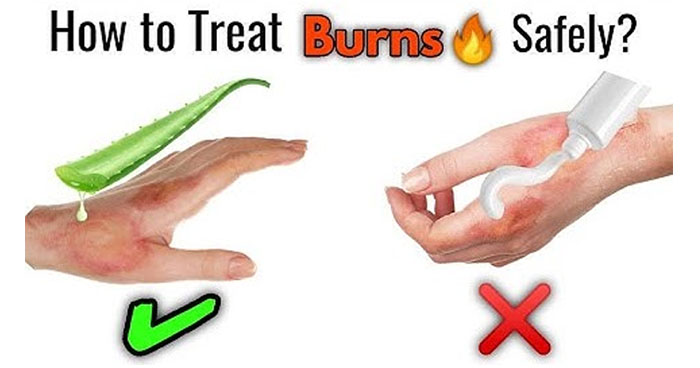It’s logical to associate a burn with fire. However, the kinds of burns that can lead to scarring aren’t always related to heat exposure. The tissue damage that stems from a burn can come from the sun, radiation, as well as chemical or electrical sources, reports the Mayo Clinic. Such sources include tanning beds, gasoline, paint thinner, X-rays, electrical currents, and more.
Burns can fall into one of four categories: first-degree burns, second-degree burns, third-degree burns, or fourth-degree burns (per MedicineNet). Each category progressively increases in severity, with fourth-degree burns penetrating the deepest layers of the skin, as well as the surrounding muscles and bones. The degree of nerve damage is often so severe that those with fourth-degree burns usually do not feel any physical pain.
Damaging the outermost layer of the skin, first-degree burns are characterized by pain and redness, but usually do not form blisters or result in nerve damage (via Healthline). Able to be treated with at-home remedies, first-degree burns generally leave no scarring behind.
Severe burns have an increased risk of scarring
Second-degree through fourth-degree burns are a different story, as they are likely to result in scars and usually require medical attention (via Healthline). “Second-degree burns that are larger than the palm of your hand require emergency attention,” board-certified dermatologist Thomas Beachkofsky tells Allure.
This is especially true for second-degree burns that develop on the face, genitals, toes, or fingers, as these areas are prone to scarring that can impact mobility.
Scarring is highly associated with third and fourth-degree burns. “When a person gets a third or fourth-degree burn, the skin will appear charred and can appear white, brown, or black. In these situations, the risk of scarring, infection, and pain is high, and emergency attention is recommended,” Beachkofsky told Allure.
Taking extra safety precautions when it comes to burns is the best way to practice prevention. The Mayo Clinic advises keeping pot handles turned toward the back of the stove when cooking, putting protective covers on electrical outlets, unplugging irons when not in use, wearing protective gear when handling chemicals, and keeping your water heater set at less than 120 degrees Fahrenheit.
Even so, it’s important to recognize when a burn warrants medical attention. Burns that appear leathery, charred, ooze, or are accompanied by breathing difficulty warrant immediate emergency care, as well as any burns from electrical or chemical sources.



